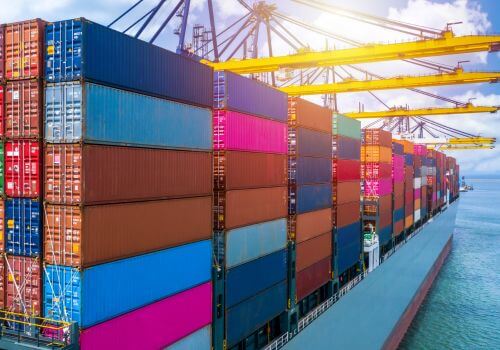Customs in logistics refers to the process of clearing goods for import or export across international borders. It’s a crucial step in international trade that ensures compliance with laws, regulations, and tax requirements of different countries. Here’s a comprehensive overview of customs in logistics.
What is customs?
Customs is a government agency responsible for controlling the flow of goods in and out of a country. The main purposes of customs are:
- Collecting taxes and duties on imported goods
- Enforcing trade regulations and restrictions
- Protecting national security
- Preventing illegal trafficking of goods
- Gathering trade statistics
In the context of logistics, customs clearance is the procedure that allows goods to enter or leave a country legally.
What is the customs clearance process?
The customs clearance process typically involves several steps.
1. Documentation submission
When goods arrive at a port of entry, the importer or their representative (often a customs broker) must submit various documents to customs authorities. These documents typically include:
- Commercial invoice
- Packing list
- Bill of lading or airway bill
- Certificate of origin
- Import license (if required)
- Other specific certificates depending on the nature of goods
2. Customs Declaration
A customs declaration form must be completed, providing details about the goods, including their description, value, quantity, and purpose of import or export.
3. Document Review and Inspection
Customs officials review the submitted documents and may physically inspect the goods to verify the accuracy of the declaration and ensure compliance with regulations.
4. Duty and Tax Assessment
Based on the information provided, customs officials calculate any applicable duties and taxes. The amount depends on factors such as the type of goods, their value, and the country of origin.
5. Payment of Duties and Taxes
The importer must pay the assessed duties and taxes before the goods can be released.
6. Release of Goods
Once all requirements are met and payments are made, customs issues a release order, allowing the goods to enter the country or continue to their final destination.
What are the different types of customs duties?
There are several types of customs duties that may apply to imported goods:
- Ad valorem duty. Calculated as a percentage of the goods' value
- Specific duty. Based on the quantity or weight of the goods
- Compound duty. A combination of ad valorem and specific duties
- Preferential duty. Reduced rates for goods from countries with trade agreements
- Anti-dumping duty. Applied to goods sold at unfairly low prices
- Countervailing duty. Imposed to offset subsidies provided by exporting countries
What are the different customs valuation methods?
Customs authorities use various methods to determine the value of imported goods for duty calculation:
- Transaction value. The actual price paid for the goods
- Transaction value of identical goods. Based on previously imported identical goods
- Transaction value of similar goods. Based on similar goods imported under comparable conditions
- Deductive value. Derived from the selling price in the importing country
- Computed value. Based on production costs, profit, and general expenses
- Fallback method. Used when none of the above methods are applicable
What are the different customs procedures and regimes?
Different customs procedures and regimes exist to facilitate trade and address specific situations:
Direct Import
The standard procedure where goods enter a country for domestic consumption.
Temporary Import
Allows goods to enter a country temporarily (e.g., for exhibitions) without paying full duties.
Transit
Permits goods to pass through a country en route to their final destination.
Bonded Warehouse
Allows storage of imported goods without payment of duties until they are released for domestic consumption.
Inward Processing
Enables duty-free import of materials for processing and subsequent re-export.
Outward Processing
Allows temporary export of goods for processing abroad and re-import with partial or full duty relief.
What are the general requirements for customs compliance?
Ensuring compliance with customs regulations is crucial for smooth international trade operations. Key aspects of customs compliance include:
- Accurate classification of goods using the Harmonized System (HS) codes
- Correct valuation of goods
- Proper documentation and record-keeping
- Adherence to trade agreements and preferential treatment rules
- Compliance with restricted or prohibited goods regulations
- Timely payment of duties and taxes
Technology in customs
Advancements in technology have significantly impacted customs processes:
- Electronic Data Interchange (EDI) systems for faster document submission
- Risk management systems for targeted inspections
- Single Window systems for streamlined trade procedures
- Blockchain technology for enhanced traceability and security
- Artificial Intelligence for improved risk assessment and fraud detection
In summary, Customs in logistics is the process of clearing goods through government checkpoints when entering or leaving a country, ensuring compliance with laws, regulations, and tax requirements for international trade.






